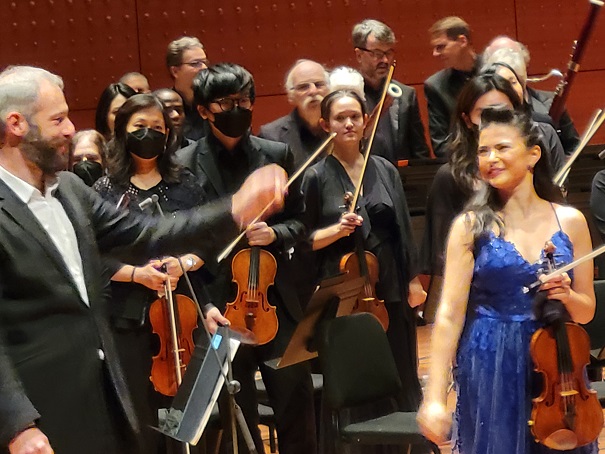Concert Diary: Shostakovich and Tchaikovsky with the New York Philharmonic
November 19, 2021
New York, N.Y.
In the history of music, I don’t think there’s ever been a composer put through the ringer, raked over the coals, and dragged through the mud more than Dmitri Shostakovich. All composers must struggle with bad reviews, but when those reviews are instigated by Joseph Stalin, it’s no longer just a difference in aesthetics. What’s worse, at the same time that Shostakovich was being castigated by the Soviet government, he was often perceived in the West as a subservient and cowardly lackey of that same government, which he sometimes was forced to be.
Consequently, it’s hard to know how to interpret Shostakovich’s music. HIs music contains irony, anger, sadness, self-abasement, ridicule, and perhaps even joy and exaltation, all mixed up in a way that’s hard to pull apart and understand. Ten years ago, I struggled with this issue while immersing myself in the Shostakovich String Quartets, but these problems also arise in different ways with many of his other works.
This past Thursday, I had the pleasure of seeing a spectacular performance of Shostakovich’s Violin Concerto No. 1 in A minor, with Tokyo-born violinist Karen Gomyo and Moscow-born conductor Dima Slobodeniouk, both making debuts with the New York Philharmonic.
Shostakovich composed his first Violin Concerto in 1947–48 at a time when he and some other Soviet composers were being condemned for “formalist perversions and antidemocratic tendencies in music, alien to the Soviet people and its artistic tastes.” The public didn’t get to hear the concerto until its first public performance in Leningrad in October 1955, two years after Stalin’s death. It received its New York Philharmonic debut two months later, and has been a concert stable ever since.
The Shostakovich Violin Concerto has a slow-fast-slow-fast structure. The first movement, which Shostakovich calls a Nocturne, is long and wandering. It seems to be searching for something but remains melancholy throughout, at times falling into anguish. The second movement Scherzo immediately rebounds with chattering woodwinds and a bouncy violin that after a couple minutes explodes into a grotesque circus. Totally nuts!
In another startling contrast, the third movement Passacaglia is a devastating dirge with perhaps the saddest violin melody ever. A solo violin cadenza forms a bridge between the third movement and finale, but it’s much too long fof a mere bridge! It’s about five minutes in length, progressively becoming more harried and frantic until the bass drums and a xylophone announce the Finale, which Shostakovich appropriately calls a Burlesque, out of which seems to emerge some kind of whacky triumph. (I think.)
Violinist Karen Gomyo not only managed the virtuosic aspects of the Shostakovich Violin Concerto, but together with conductor Dima Slobodeniouk was able to hold the disparate pieces together to achieve at least an intuitive coherence. Here are conductor and violinist during curtain calls:
The second half of the concert was a work I had never heard before: Pyotr Tchaikovsky’s Symphony No. 1, called Winter Dreams. Tchaikovsky seems to have started out with a program in mind, but then abandoned it. The first movement, dreamy at times but with a big climax, is called “Daydreams of a Winter Journey.” Given such a title, we really expect some sleighbells but alas, there are none. The second movement, “Land of Gloom, Land of Mist,” uses what sounds like a Russian folktune played by oboes and bassoon, that is beguiling in its simplicity.
Then those wonderful titles disappear for the third movement Scherzo based on a repetitive motif with an overly melodic waltzy Trio section. The finale starts off slow, speeds up to a perhaps excessively happy fugal section, gets slow again, and then zooms into a faster louder coda that at least to my ears, seemed superficial and unjustified.
